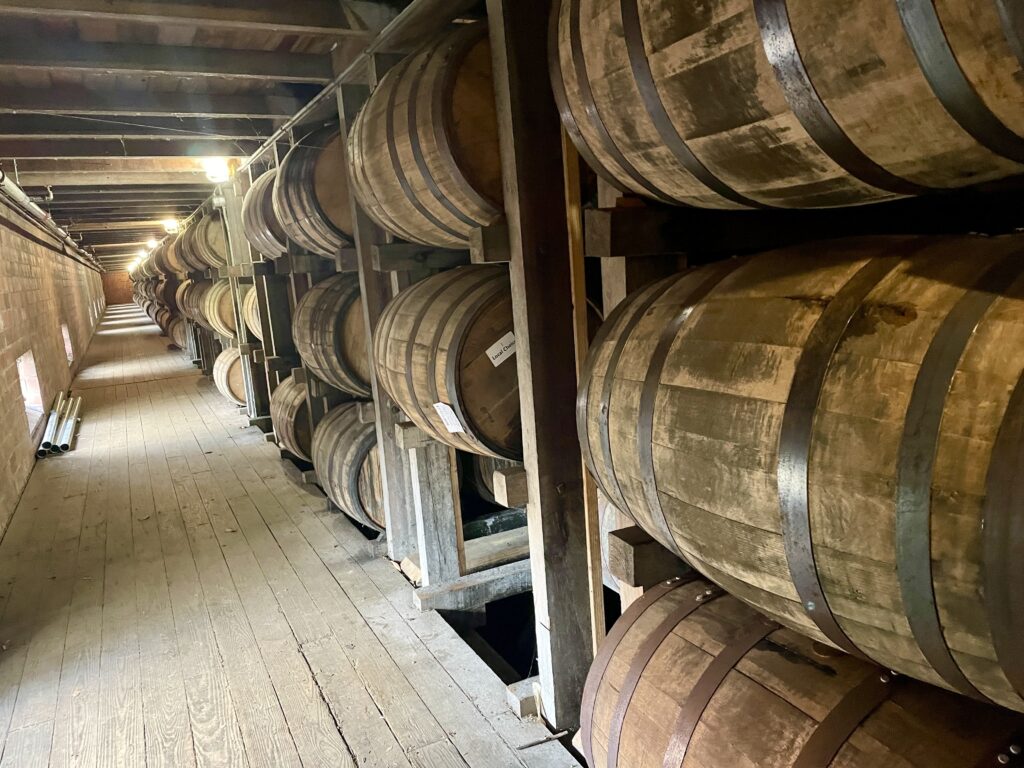
Types of Barrels / Casks
Exploring the Types of Whisky Casks: Hogsheads, Butts, Puncheons, and More
When it comes to whisky, one of the most impactful elements influencing flavor is the cask in which it’s aged. As whisky matures, it extracts flavors, aromas, and color from the wood, creating complex profiles that delight enthusiasts. Different cask types bring unique attributes to the whisky due to variations in size, shape, wood, and previous contents. Here’s a detailed look at some of the most common whisky cask types and the distinct characteristics they impart.
1. Hogshead (Approx. 225-250 Liters)
The Hogshead, often simply called a “hoggie,” is one of the most widely used casks in the Scotch whisky industry. It is typically made from American oak and assembled by coopers, often by reconstructing used bourbon barrels into larger vessels. The increased size of the hogshead means a more gradual interaction between the whisky and the wood, which is ideal for creating balanced, long-aged whiskies. The Hogshead offers vanilla, caramel, and sometimes coconut notes due to its American oak origins.
Common Uses: Primarily for Scotch whisky aging; often reused multiple times.
Flavor Contributions: Vanilla, toffee, and sometimes subtle coconut.
2. Butt (Approx. 475-500 Liters)
The Butt is traditionally used in the Spanish sherry industry, making it a popular choice for whiskies that aim to feature sherry influences. Most sherry butts are made from European oak, known for imparting rich, fruity, and spicy notes. Due to its large size, the whisky matures more slowly, often resulting in a rich and smooth profile with pronounced sherry notes. Butts are often selected for creating well-aged, complex, and deeply flavorful whiskies.
Common Uses: Sherry-matured whiskies, especially those intended to showcase sherry character.
Flavor Contributions: Dark fruit, nuts, spices, and chocolate.
3. Puncheon (Approx. 450-500 Liters)
Puncheons are among the largest casks and can be made from either American or European oak. There are two main types of puncheons: the Sherry Puncheon, which has a thicker, shorter build and is made from European oak, and the Rum Puncheon, used for aging rum before being repurposed for whisky. Sherry puncheons contribute a robust sherry influence with notes of dried fruits, while rum puncheons bring tropical fruit notes and hints of molasses.
Common Uses: Both sherry and rum influence, offering unique profiles for whisky maturation.
Flavor Contributions: Dried fruit, caramel, molasses, tropical fruits.
4. Barrel (Approx. 180-200 Liters)
The classic American Standard Barrel (ASB) is widely used in bourbon production and later repurposed for Scotch whisky aging. Made of charred American white oak, barrels impart sweet, vanilla-forward flavors to the whisky. In Scotch whisky, they add notes of honey, toffee, and baking spices, often mellowed by multiple years of aging.
Common Uses: Bourbon production and, later, Scotch whisky maturation.
Flavor Contributions: Sweetness, vanilla, caramel, and spices.
5. Quarter Cask (Approx. 45-50 Liters)
Quarter Casks are smaller, allowing for increased contact between the wood and the whisky, which accelerates maturation and intensifies flavor extraction. Quarter casks are favored by some distillers who aim to produce whiskies with bold, oaky flavors in shorter timeframes. They’re often used to “finish” whiskies, imparting rich wood influence and creating robust, intense flavor profiles.
Common Uses: Peated whiskies and fast-track aging; often used for finishing.
Flavor Contributions: Intensified oak, vanilla, and smoke.
6. Port Pipe (Approx. 550-650 Liters)
Port Pipes are long, slender casks traditionally used to mature port wine, typically made from European oak. After being used in port production, these casks impart distinct fruit and berry flavors when repurposed for whisky. They are known for adding a red hue and lush notes of berries and honey to the whisky, creating a sweet, complex flavor profile.
Common Uses: Port-influenced finishes and single malts seeking berry notes.
Flavor Contributions: Red berries, honey, and a hint of spice.
7. Madeira Drum (Approx. 650 Liters)
Madeira Drums are large, wide casks made from European oak, originally used for aging Madeira wine. With a distinct, more open structure than other wine casks, Madeira Drums impart a warm, nutty flavor to the whisky. Whiskies aged or finished in Madeira casks often exhibit flavors of dried fruits, toasted nuts, and subtle spice.
Common Uses: Specialty whiskies, often as finishing casks to add Madeira influence.
Flavor Contributions: Dried fruits, nuts, and spices.
8. Sauternes Cask (Approx. 225 Liters)
The Sauternes Cask is a smaller wine cask from the Sauternes region of France, known for its sweet, dessert-like wines. Whisky aged in or finished in Sauternes casks often takes on a honeyed, fruity profile with notes of apricot, peach, and citrus. These casks are particularly prized for adding a decadent sweetness to the whisky.
Common Uses: Finishing single malts and specialty whiskies for sweetness and fruitiness.
Flavor Contributions: Honey, peach, apricot, and citrus.
9. Bordeaux Wine Barrique (Approx. 225 Liters)
The Bordeaux Barrique is a popular choice for whisky finishes, especially for those seeking to impart red wine character. These casks are traditionally used to age Bordeaux wines and, when used in whisky, contribute rich, tannic notes with red fruit flavors and a hint of oak.
Common Uses: Single malts, especially those looking for added complexity from red wine.
Flavor Contributions: Red fruits, tannins, and oak spice.
Conclusion
Each type of cask brings a unique set of characteristics to the whisky, offering a range of flavors from fruity and spicy to smoky and oaky. Whisky producers experiment with various cask types to craft complex and distinctive profiles, providing enthusiasts with a taste experience that reflects the heritage and artistry behind every dram. Whether enjoying the rich depth of a sherry butt-aged whisky or the intense oak influence of a quarter cask, understanding cask types enhances one’s appreciation of whisky and the intricate journey from barrel to bottle.